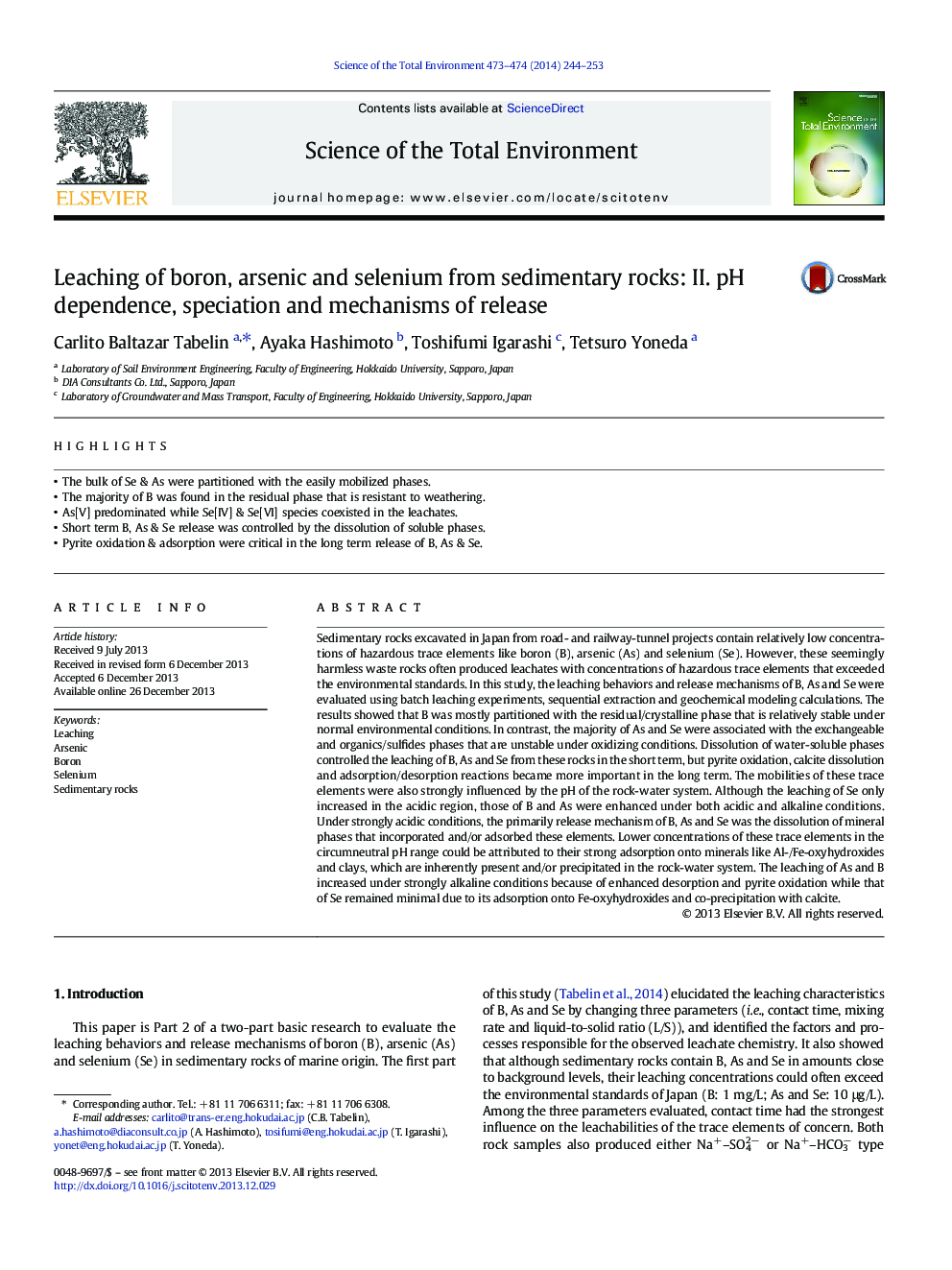| Article ID | Journal | Published Year | Pages | File Type |
|---|---|---|---|---|
| 6331654 | Science of The Total Environment | 2014 | 10 Pages |
â¢The bulk of Se & As were partitioned with the easily mobilized phases.â¢The majority of B was found in the residual phase that is resistant to weathering.â¢As[V] predominated while Se[IV] & Se[VI] species coexisted in the leachates.â¢Short term B, As & Se release was controlled by the dissolution of soluble phases.â¢Pyrite oxidation & adsorption were critical in the long term release of B, As & Se.
Sedimentary rocks excavated in Japan from road- and railway-tunnel projects contain relatively low concentrations of hazardous trace elements like boron (B), arsenic (As) and selenium (Se). However, these seemingly harmless waste rocks often produced leachates with concentrations of hazardous trace elements that exceeded the environmental standards. In this study, the leaching behaviors and release mechanisms of B, As and Se were evaluated using batch leaching experiments, sequential extraction and geochemical modeling calculations. The results showed that B was mostly partitioned with the residual/crystalline phase that is relatively stable under normal environmental conditions. In contrast, the majority of As and Se were associated with the exchangeable and organics/sulfides phases that are unstable under oxidizing conditions. Dissolution of water-soluble phases controlled the leaching of B, As and Se from these rocks in the short term, but pyrite oxidation, calcite dissolution and adsorption/desorption reactions became more important in the long term. The mobilities of these trace elements were also strongly influenced by the pH of the rock-water system. Although the leaching of Se only increased in the acidic region, those of B and As were enhanced under both acidic and alkaline conditions. Under strongly acidic conditions, the primarily release mechanism of B, As and Se was the dissolution of mineral phases that incorporated and/or adsorbed these elements. Lower concentrations of these trace elements in the circumneutral pH range could be attributed to their strong adsorption onto minerals like Al-/Fe-oxyhydroxides and clays, which are inherently present and/or precipitated in the rock-water system. The leaching of As and B increased under strongly alkaline conditions because of enhanced desorption and pyrite oxidation while that of Se remained minimal due to its adsorption onto Fe-oxyhydroxides and co-precipitation with calcite.
